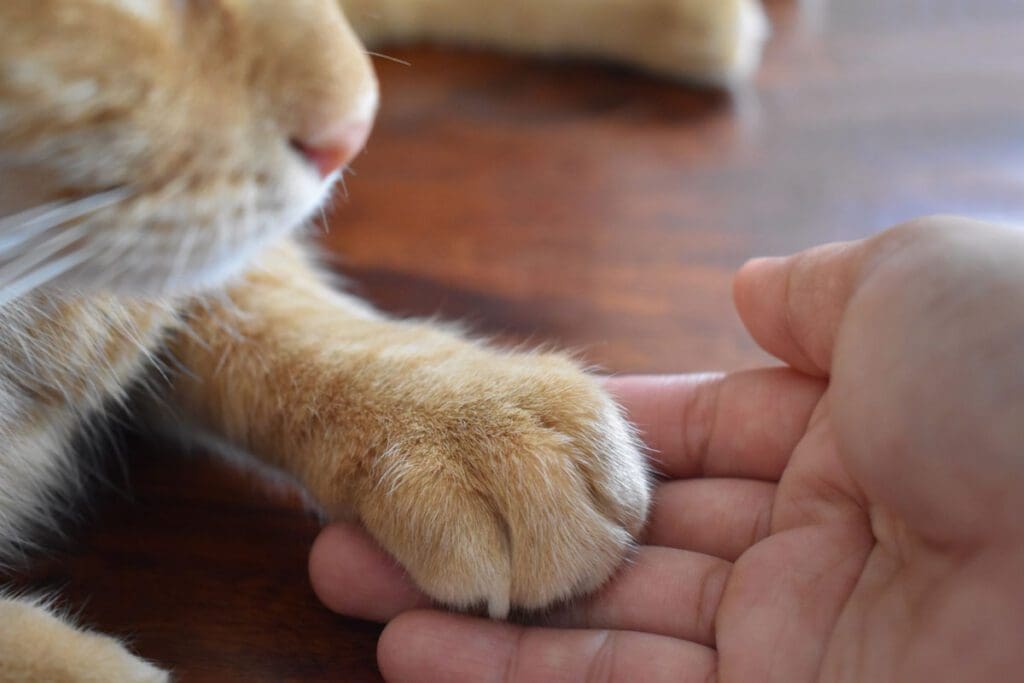Cats are cautious animals. It takes time in the beginning of your relationship to earn their trust. Doing so isn’t difficult, but it definitely takes patience. These 10 tips will show you common ways to develop a bond with your feline roommate.
1. Allow Your Cat to Sniff You

The best way to introduce yourself to a cat is to sit and let it come to you. Allow them to sniff freely. Scents are how cats say hello and swap information. Cats have widespread tiny scent receptors that release pheromones. These chemicals communicate friendly greetings. After the cat has sniffed you, let it choose the next move.
2. Try Calming Pheromones

Calming plug-in pheromones diffusers or sprays are made to mimic the way a cat’s natural pheromones work. Cats rub up against your legs and furniture, releasing pheromones that mark the area as safe. In the same way, these synthetic versions give off scent signals that help your cat feel more relaxed.
3. Always Speak in a Calm and Soothing Voice

Talking to your cat will help it recognize you, as well as associate you with positive outcomes. They can also pick up on energy. Cats can recognize familiar voices. Reinforcing a calm and soothing voice helps associate those tones with positive outcomes and the positive behaviors you desire in your cat.
4. Establish a Routine

Most animals crave predictability. Creating a reliable routine can relieve your cat’s anxiety and make it feel safe. Stick to feeding, playing, cuddling, and grooming schedules around the same time each day. If you can’t stick to your regular feeding schedule, consider a pet sitter or an automatic pet feeder.
5. Minimize Any Stressors

Life in a new home is stressful for any feline. Large spaces can be overwhelming. If possible, start your cat out in a small room. Pick a place that’s quiet without other pets and low activity. Provide the necessities like scratching posts, toys, and a litter box. Once they are comfortable, proceed with a slow introduction.
6. Try Positive Reinforcement

The need to stop your cat from unwanted behaviors can also challenge your ability to bond. Therefore, it’s important to use positive reinforcement by rewarding them for desired behavior. To stop unwanted behavior, steer them toward alternative behavior and reward them for doing so. Use treats, praise, play, toys, or affection.
7. Respect Your Cat’s “No Touch” Areas

When petting your cat, start with areas cats are known to enjoy and accept: Their head, cheeks, and under the chin. Likewise, there are vulnerable areas where most cats do not enjoy being petted. This includes the stomach, limbs, and tail. Even after you have bonded with your cat, these areas may still be off-limits.
8. Squint or Slowly Blink at Your Cat

Signaling to your cat by speaking in their own “body language” can communicate calm and safety. When a cat trusts its environment and feels safe, they relax their eyes, slowly closing them or squinting. By doing the same, you can send a message in cat language that there’s nothing to worry about.
Read More: How to Build Trust With Your New Cat
9. Play with Your Cat Often

Even with shy cats, playtime helps break the ice. Playing with your cat is essential for building a bond and trust. Use a toy like a wand or a strand of yarn, something that allows play, but keeps you at a distance. The cat knows it’s interacting with you, but doesn’t feel threatened by your physical contact.
Read More: How to Discipline a Cat the Right Way
10. Provide a Safe Space for Your Cat

Hiding is how cats escape stress. Therefore, it’s important to create a safe space for your cat. Provide a cubbyhole somewhere in your home or a cat tree. Just pay attention if your cat hides for more than a day. If your cat is lethargic, sleeping a lot, or has a loss of appetite, call your vet – cats often hide when they’re ill.
Read More: What To Do If Your Cat Runs Away






